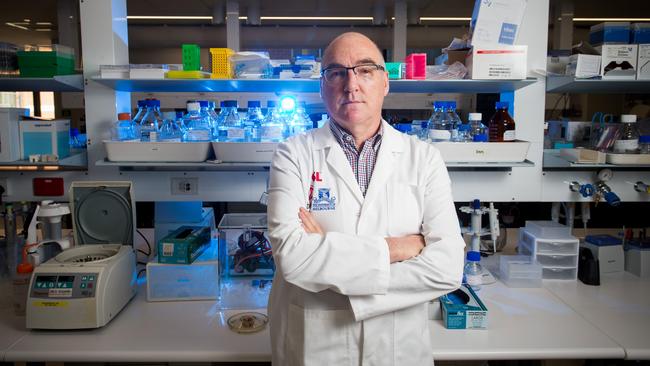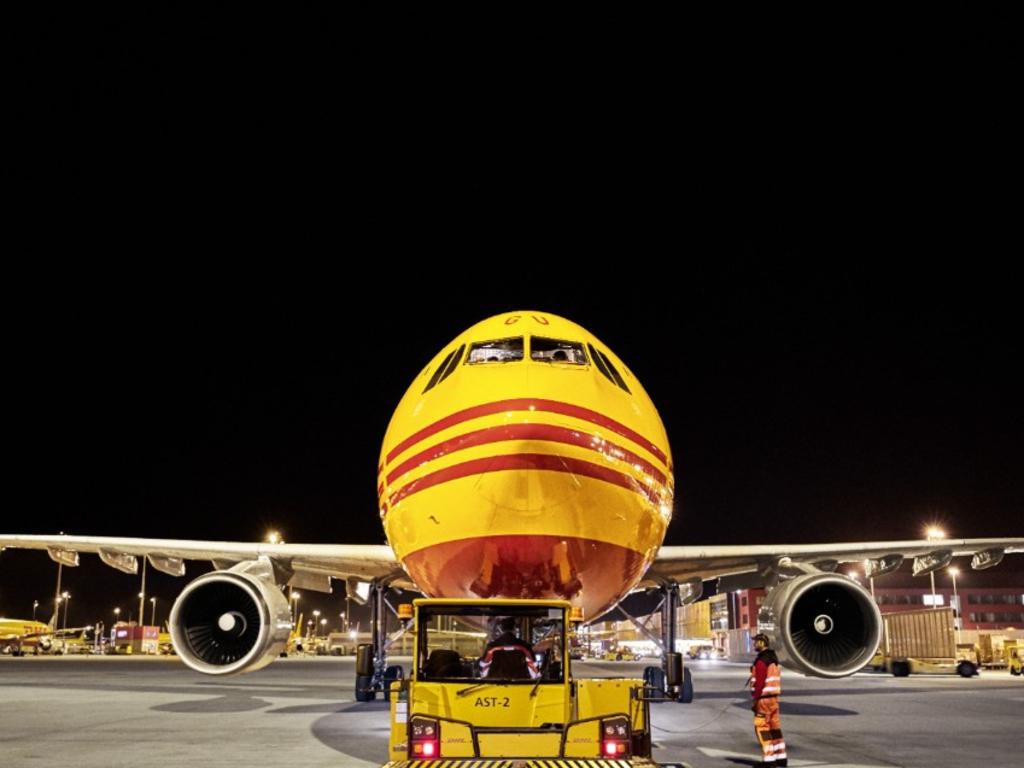CSL warming to idea of a heat-tolerant mRNA vaccine as cold storage limits effectiveness
Australia’s biggest health company is adopting new technology deployed against Covid-19 in its next generation of flu vaccines.

Australia’s biggest health company is yet to crack the code in one of the biggest challenges for the Covid-19 vaccine rollout: extreme temperature control.
CSL is adopting messenger RNA – the same technology underpinning Pfizer’s and Moderna’s Covid jabs – for use in its next generation of influenza vaccines.
The appeal of next-generation mRNA is that it allows vaccine manufacturers like CSL to pack a more potent dose in a smaller package, developing more effective immunisation.
But it is unlikely to be used to protect against the flu soon, despite first-generation mRNA being injected into the arms of most Australians under 60 to vaccinate against Covid-19.
The main reason is temperature. Messenger RNA vaccines must be transported in extreme cold storage as low as minus 70 degrees – colder than the South Pole in winter. Traditional vaccines can be shipped between 2 and 8 degrees.
“The whole supply chain, cold chain issue with RNA vaccines makes it very hard for something as simple as a flu vaccine that has to be available in pharmacies, to doctors every year on the dot,” CSL chief scientific officer Andrew Nash said after the company’s annual research and development day. “I know lots of people are working on that. We’re working on it as well. I don’t think we’ve solved the problem but I think there’s been quite a lot of headway made since they were initially released where they had to be stored at minus 80 degrees.
“But I certainly don’t think it’s advanced sufficiently that it’s ready for prime time for things like influenza yet. It’s very much still a pandemic situation.”
“Warming up” mRNA vaccines is a challenge that both private and government enterprises – from Australia’s CSIRO to global pharmaceutical giant GlaxoSmithKline – have been grappling with. Improved temperature tolerance would be a breakthrough, particularly for Third World countries with limited cold chain infrastructure.
Research and development is a big focus for CSL, with the spend rising steadily from $667m in 2016-17 to $922m in 2019-20 and breaching $1bn last financial year. Dr Nash said while this was a “huge achievement for an Australian pharmaceutical biotechnology company” it puts it in the “mid-size on a global scale”.
“But in the context of the Australian R&D sector, it makes us far and away the biggest private sector investor in R&D,” he said.
Messenger RNA vaccines have been in development for many years but it has taken the Covid-19 pandemic to catapult it into the mainstream. It works by sending instructions to the body’s cells to make a particular type of protein that stimulates an immune response to protect against infection.
This is unlike the traditional method of manufacturing flu shots, which uses chicken eggs to grow the virus, before weakening it or killing it to develop a vaccine.
While some companies, like CSL rival Novavax, are looking to combine Covid-19 and flu vaccines into a “super jab”, Dr Nash says it’s a big ask.
The flu shot – while widely available – is in some ways more complex than the Covid-19 jab, which is why making a combined super flu-Covid vaccine is difficult.
“The important thing to remember is influenza is very different from Covid-19,” Dr Nash said.
“The influenza vaccines that we all take now have four separate strains in them, compared to Covid-19, which is a single strain of that virus. So all of a sudden you’ve got four times as much RNA to vaccinate against those four viral strains.
“Now there’s quite a few questions as to how effective and safe and tolerable it’ll be in something like influenza.
“If you’ve been following Pfizer and Moderna, certainly they in their early clinical studies hit an upper limit of the amount of RNA you can administer before you start getting adverse events — pain at the site of injection, etc. And in fact, those doses that resulted in those adverse events weren’t really that much higher than what was used, so the therapeutic window was pretty small.”
CSL hopes to overcome this problem by using what is known as “self-amplifying mRNA”. Unlike the Pfizer and Moderna Covid-19 jabs – which involve injecting all the RNA needed to make protein for immunisation – self-amplifying “effectively means you can give smaller doses for the same response”, Dr Nash said.
“It’s a second-generation technology. The technology we have hasn’t reached the clinic yet. But we’re really interested to see how it works out in the influenza space.”
But CSL isn’t placing all its bets on mRNA. It is also investing is cell-based influenza vaccines, which do not require eggs to manufacture, enabling higher quantities to be made at shorter notice – a must in a pandemic.
It is spending $800m on building a cell culture facility at Tullamarine, which is under construction and is expected to be completed in 2026. CSL has already signed an $800m, 10-year supply agreement with the Commonwealth for antivenoms, Q-fever vaccines and pandemic influenza vaccines.
The Tullamarine facility will replicate Seqirus’s influenza factory at Holly Springs, North Carolina, which has been manufacturing and stockpiling AUDENZ, the first adjuvanted, cell-based influenza vaccine designed to protect against A (H5N1), known as bird flu.
“We are leading the change across cell-based manufacturing. So instead of using fertilised eggs, we use cell culture in the big fermenters that you see in normal biotech facilities. That’s how we make flu vaccine in the US, in North Carolina, and that’s how we’ll make flu vaccines in the facility at Tullamarine.
“Sitting alongside that is the work with messenger RNA. Flu’s a very big global market, different environments. There’s still going to be a place for egg-based vaccines for the next decade probably.
“But increasingly, people will be using things like cell-based manufacturing and potentially RNA as well.”
It all forms part of CSL’s $1bn a year research and development portfolio, which also includes a potential genetic therapy to cure haemophilia B.
“The FDA is looking at it at the moment, and we’re really hopeful that it will be approved and those patients, or a subset of those patients at least will be effectively cured with a gene therapy.
“So that’s really coming full circle since the days of the tsars and their children and the royal family, into actually curing these kids with gene therapy.”







To join the conversation, please log in. Don't have an account? Register
Join the conversation, you are commenting as Logout